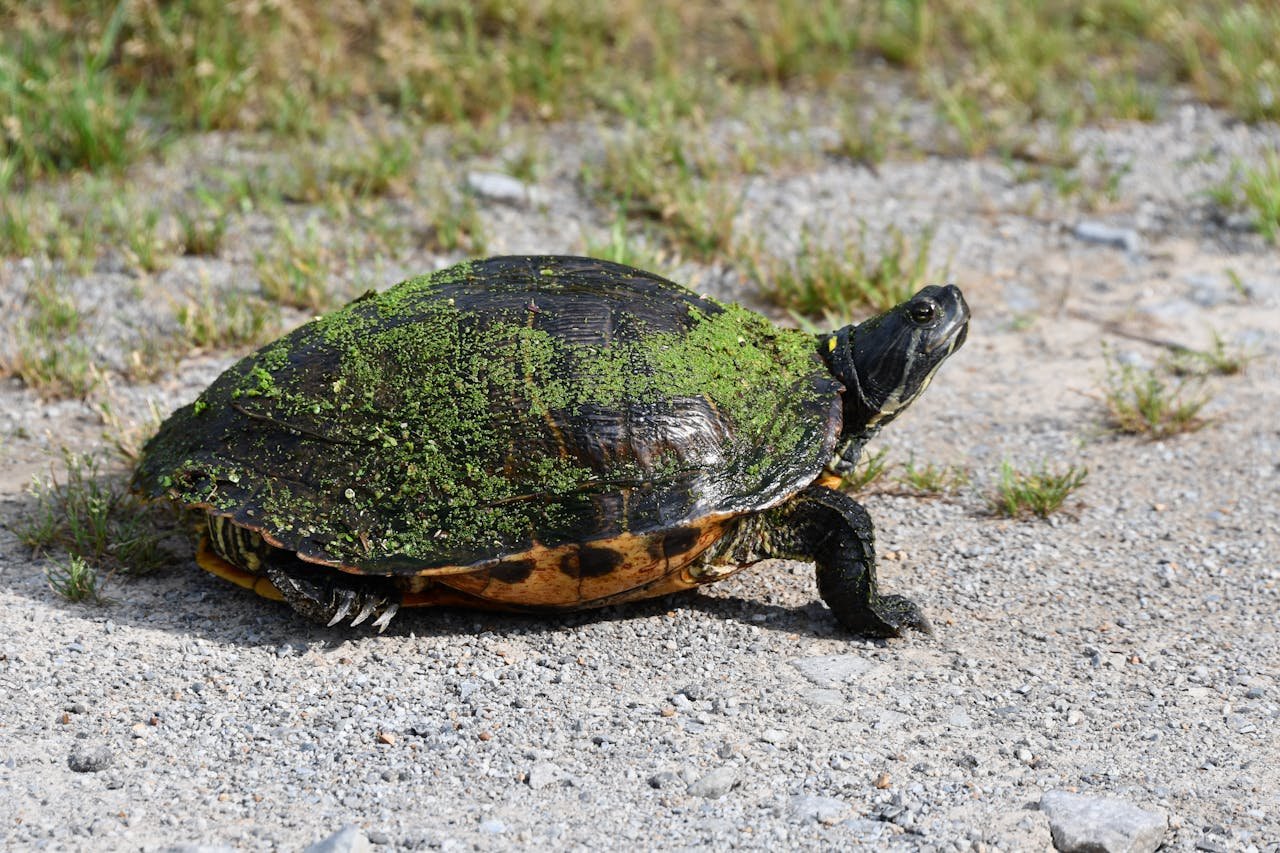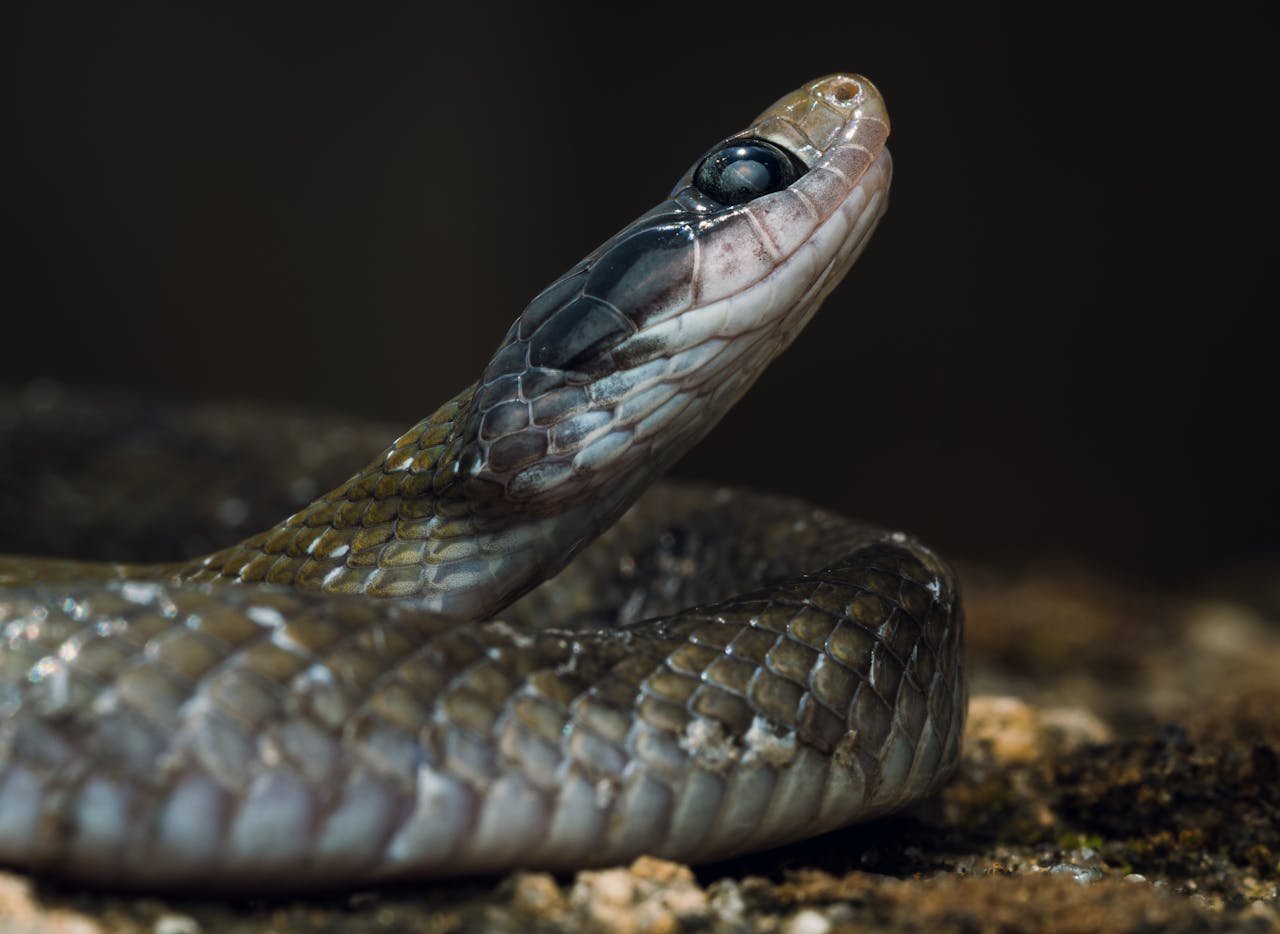Box Turtle of the genus Terrapene is one particularly interesting land turtle due to its structure and behavior. Native to North America, Box Turtles are widely known because of their strange, box-like shells and usually give immense contribution to the ecosystems where they dwell. This article will, in great detail outline the physical characteristics, habitat, behavior, and conservation status of the Box Turtle.
Their anatomic structure is highly unusual, having two hinged parts to the shell of Box Turtles, allowing it to close completely and thereby providing a protective “box” around the body. It gives an effective mechanism of defense against predators. In the Box Turtle, the upper or carapace and lower or plastron shells are joined along the midline by a hinge to allow the complete closure of the animal.
They are also highly variable among species in terms of their size, coloration, and pattern. Adults of most of the Box Turtle species commonly happen within an average length of about 4.5 to 6 inches, though some species are a little larger. The color of the shell can vary from brown and black, with complex patterns of yellow, orange, and red. Besides their beauty, such patterns camouflage them in the wild.
Species Diversity
There are numerous species of Box Turtles with typical features and various regions of distribution, which will be enumerated below:
Eastern Box Turtle (Terrapene carolina carolina)**: As the name would depict, this kind of box turtle is found in the eastern United States. This generally has bright patterns against a dark brown or black background, where the coloration on the shell can be dominated mostly by orange and yellow patterns.
Three-Toed Box Turtle (Terrapene carolina triunguis**): central and southern United States, three toes on each hind foot, and the coloration of the shell is somewhat less bright in comparison with the Eastern Box Turtle.
Ornate Box Turtle Terrapene ornata: A native box turtle species of the Great Plains, it has an extremely ornated carapace with intricate yellow or orange patterns. Semi-arid conditions are best suited for this species, which is highly associated with open grassland and prairies.
Desert Box Turtle (*Terrapene luteola): Native to the inland south-west states and northern Mexico, it occurs in arid conditions; because of that fact, its coloration is generally more subdued.
Mainly, turtles are terrestrial; the various species differ because the various species have differing habitats. These generally range from woodland to grasslands to prairies and forest edges. They show habitat specificity mainly because of demands arising because of ecological reasons.
Eastern Box Turtle: It inhabits more open areas, slightly woody or forested, with a high level of moisture and vegetation cover. Very common in areas with a high amount of leaf litter, wet soils where the substrate is supportive enough for feeding and shelter for them.
- Three-Toed Box Turtle: Their habitats range from woods to grasslands and farmlands; a land-dwelling turtle, for all types of vegetation areas.
- Ornate Box Turtle: This is mainly found in open grasslands and prairies in which it might hibernate under grasses and shrubs. It is adequate in semi-arid conditions and hence largely found in sparsely vegetated locales.
Desert Box Turtle: In arid, semi-arid areas, deserts, and scrub. It is one of the well adapted species, which can survive with just a little water and at high temperatures.

It is also interesting in terms of its care and behavioral traits, further supporting their adaptations for survival and success in their various habitats. Perhaps the most obvious adaptation is for a box turtle to withdraw into its shell for protection. A threatened Box Turtle can close its shell tightly with its hinged plastron to block entry points.
Generally speaking, box turtles are slow-moving and sedentary. Normally, they would spend their time in burrows foraging, basking, and resting. Their diet varied so much that it could be as varied as insects and worms, fruits, vegetables, and small invertebrates. In fact, such an omnivorous diet says volumes about adaptability and the ability to capitalize on whatever resources may be available to them.
One of the bizarre behaviors of Box Turtles is to depend upon environmental signals that will indicate the activity regulation. They are ectothermic; hence, they would depend upon exogenous sources of heat that will help them regulate their body temperature. Most of the time, it may be observed that Box Turtles bask in the sun to warm up and seek shade or shelter to cool down.
Reproduction and Lifespan
Box Turtles are considered slow breeders. Sexual maturity among species under different environmental conditions is attained between the ages of 5 to 10 years. Mating usually begins from spring to summer at which time males will do head-bobbing, circling, and rubbing as a form of courtship to females.
They burrow into the ground and rest in shallow nests. The clutch may vary between species, but the average clutch ranges from 3 to 7 eggs. After laying, they allow the eggs to incubate in the soil. The incubation period is variable, with two to three months passing before normal eggs hatch. Hatchlings are independent at birth; they can search for food themselves.
These animals are long-lived, with reports indicating one lived 50 years or more in the wild. In captivity, Box Turtles that did not suffer the pressures of natural predation and had food and water with uniform predictability lived longer, often into their 70s.
Conservation Status
Major threats to the Box Turtles include habitat loss and fragmentation, climate change, and human activities. Many species, though, are still comparatively common, while others are just beginning to show declines in their numbers.
The Eastern Box Turtle: Major threats include destruction of habitat, mortality on roads, and collection for the pet trade. Its conservation calls for protection of its habitats besides mitigative measures on the roads and education of the public.
Three-Toed Box Turtle: This is not listed among the threatened so far but is impacted by loss and fragmentation of its habitat. Some of the measures of conservation involved protection of habitats and monitoring of population trends.

Ornate Box Turtle: IUCN classifies Ornate Box Turtle as “Near Threatened.” Its habitat is being destroyed due to expansion of agriculture and due to overgrazing by domestic livestock.
Desert Box Turtle: It also faces habitat deterioration and climatic changes. The conservation actions involve restoration of habitat and monitoring to estimate the influence of these changes with regards to the environment.
Ecological Role
Box turtles are an important part of their ecosystems. Omnivorous feeding habits are likely to be essential for balancing ecosystems because of the predation pressure on insects and invertebrates. In this way, their foraging behaviour would successfully alter plant communities in such activities as seed dispersal and the eating of fruits.
Other predators of the Box Turtle include birds of prey, mammals, and other bigger reptiles. Its position in the food chain gives evidence of how varied living communities relate to each other and is a strong reason for biodiversity.
Interaction with Humans
Turtles are one of the most popular pets due to their generally exotic look and small size. In most states, the requirement is that the animals should be captive-raised, and that the owner is supposed to provide proper care for them. Due to wild exploitation, there are states that regulate keeping box turtles as pets.
Wild Box Turtles are also sometimes taken from the wild for sale into the pet trade or for scientific research. The question of this practice touches a critical point when several conservation groups and biologists underline that natural populations need to be conserved, and the problem is important when it comes to responsible handling of the pet trade.
Fascination and Research
Novel adaptations and behaviors in box turtles have long been of interest to professionals and amateurs alike. Scientific inquiries extend our knowledge in reptile biology, ecology, and conservation. From reproductive biology and behavior, a gamut of research stretches on responses to changes in the environment.
One line of current research on Box Turtles is directed at ascertaining how habitat fragmentation and global climate change affect populations of this species. These aspects will help in explaining proper conservation strategy that will assure the continuous survival of these reptiles for a long period.
Conclusion
The Box Turtle is truly an exceptional animal that shows the varied and adaptive nature of terrestrial turtles. While the structure of the shell, variety of diet, and large ecological niche it occupies makes for an interesting subject to study and plays an integral part in its habitat, such conservation puts some species to a very serious test. Although their habitats require further protection, their populations have to be monitored for a quite necessary reason of sustainable survival.
It is deeper that we go and understand the care that pertains to the Box Turtle for the preservation of its natural setting and the threats that are upon it. Box turtles alive and breathe in the beauty and importance of nature; the continuous need for conservation and research is but for the protection of the various species we share this planet with.










